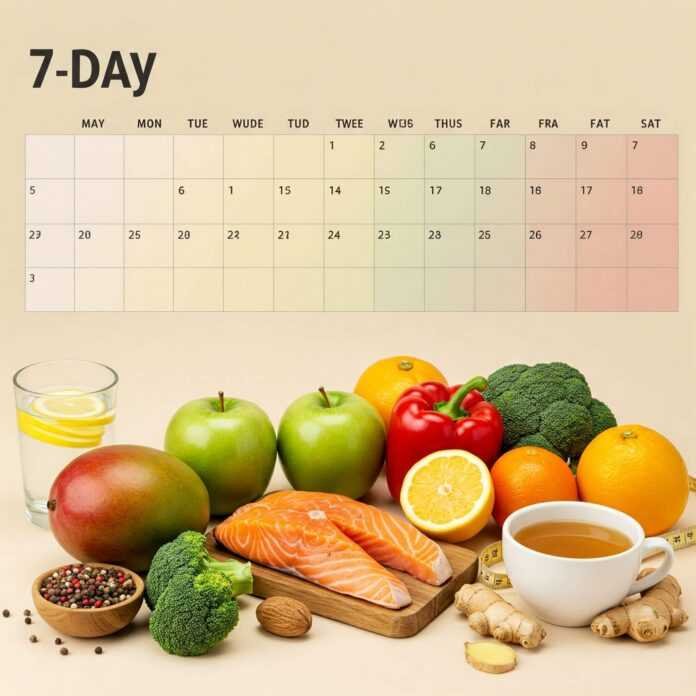Okay, so I’m plopped on a creaky chair in my tiny Delhi apartment, fan buzzing like a pissed-off hornet, trying this 7-day intermittent fasting meal plan for beginners while the smell of fresh pakoras from the street below is straight-up torturing me. Like, intermittent fasting for beginners in India? Bold move for a snack-loving American like me, who’s been known to demolish a bag of chips at 2 AM back in the States. I’m writing this with chai splattered on my notebook—yep, already a mess—and I gotta say, diving into this fasting thing here has been equal parts humbling and hilarious. Picture me last week, jet-lagged, wandering a Jaipur market, accidentally breaking my fast with a free samosa sample at 10 AM. Total rookie fail, but it’s India, man—food’s everywhere, tempting you like a Bollywood villain.
Seriously tho, this 7-day intermittent fasting meal plan for beginners isn’t about being some perfect health guru. It’s me fumbling through, learning to skip breakfast while dodging spicy aromas and my own bad habits. I’m sharing my sloppy journey ‘cause if I can pull this off amid honking autos and 95-degree heat, you might survive it too.
Why I Tried This 7-Day Intermittent Fasting Meal Plan for Beginners
Real talk: I started this intermittent fasting beginners thing ‘cause my pants were screaming for mercy after one too many butter chicken feasts since landing in India three months ago. I was in a sweaty Agra cafe, slurping a mango lassi, googling “fasting schedule for newbies” while feeling like a total fraud—posting #HealthyVibes on social media but secretly hoarding parathas. Embarrassing, right? My gut was bloated, my energy tanked, and I was over it. I read on Harvard Health ( peep their fasting article here: https://www.health.harvard.edu/blog/intermittent-fasting-surprising-update-2018062914156 ) that intermittent fasting can help with weight loss and focus, so I was like, bet, let’s try it.
I went with the 16/8 method for my IF meal ideas—16 hours fasting, 8 hours eating. Sounds chill, but hour 15? My stomach was staging a protest, especially with street vendors frying jalebis nearby. The sensory overload—sweet syrup, sizzling oil—nearly broke me. But sticking it out gave me this weird mental clarity, like the Delhi smog lifted from my brain.

My 7-Day Intermittent Fasting Meal Plan for Beginners, Day by Day
Here’s my take on a 7-day intermittent fasting meal plan for beginners, built for real life—not some Instagram-perfect nonsense. It’s simple, flexible, and uses stuff I found in local markets here. I aimed for whole foods, stayed hydrated (black coffee saved my soul), and learned from my screw-ups. Like, one day I overate ‘cause I was starving—big mistake in this heat. Pro tip: sip lemon water to trick your brain into thinking you’re not dying for a snack.
Days 1-3: Stumbling Into a Beginner Fasting Schedule
Ease in slow, y’all. Day 1: Kicked off at noon with scrambled eggs, avocado, and tomatoes with a pinch of chaat masala—tastes like India and tacos had a baby. Kept me full till a 3 PM Greek yogurt and almond snack. Dinner at 7: veggie stir-fry with quinoa and paneer cubes. Easy, right? Well, not when my neighbor’s cooking smells had me drooling by evening.
Day 2: Swapped eggs for a smoothie bowl—bananas, spinach, protein powder, sprinkled with coconut. Afternoon: chickpea salad with cucumber and mint. Dinner: grilled fish (or tofu for my veg friends) with roti and greens. I added too much salt once, woke up looking like a balloon—note to self: chill on sodium.
Day 3: Oatmeal with berries and nuts at noon. Snack: apple with peanut butter. Dinner: lentil soup (like dal but fancier) and salad. Energy crashed mid-day; I was hangry, but a walk through a chaotic market helped. Mayo Clinic’s got a solid IF guide for more tips: https://www.mayoclinic.org/healthy-lifestyle/nutrition-and-healthy-eating/in-depth/intermittent-fasting/art-20490878.
- Drink water like it’s your job—3 liters minimum in this heat.
- Track your mood swings; mine went from cranky to zen.
- Tweak eating windows if life’s messy (like missing a train).
Days 4-7: Getting the Hang of This Intermittent Fasting for Beginners
By Day 4, this beginner fasting plan felt less alien, but I’m not gonna lie—skipping breakfast with hostel mates was awkward. I love the energy boost but hated dodging their “you not eating?” looks. Lunch: chia pudding with mangoes (market score!). Snack: carrot sticks and hummus. Dinner: mild chicken curry with brown rice.

Day 5: Veggie omelet, fruit salad snack, bean burrito bowl for dinner. I zoned out during a Zoom call, stomach growling so loud my friends cackled—mortifying but kinda bonded us. Day 6: Smoothie repeat, nuts and cheese snack, veggie stir-fry with eggs. Surprising perk: slept better despite mosquito buzz. Day 7: Big salad lunch, yogurt parfait, grilled veggies with quinoa. I slipped and ate a biscuit—sue me, I’m human.
- Mix proteins: eggs, lentils, nuts kept me grounded.
- Load up on veggies for fullness without calorie bombs.
- Play with Indian staples like dal for satiety.
Check this NIH study for more fasting science: https://www.ncbi.nlm.nih.gov/pmc/articles/PMC5959807/.
Wrapping Up My 7-Day Intermittent Fasting Meal Plan for Beginners
So yeah, that’s my chaotic stab at a 7-day intermittent fasting meal plan for beginners, scribbled from a sweaty corner of India. I dropped a couple pounds, got some discipline, but still dream of late-night naan sometimes. It’s messy, contradictory, and real—just like me dodging cows and cravings out here. If you’re curious about intermittent fasting beginners style, give it a go. Start small, laugh at your slip-ups.

Yo, try this 7-day intermittent fasting meal plan for beginners and tell me how it goes—hit the comments or check with your doc first, cool? Stay hungry, but like, not too hungry. Peace out.



































